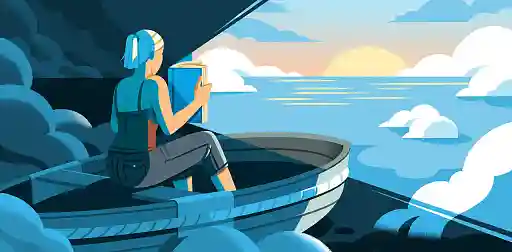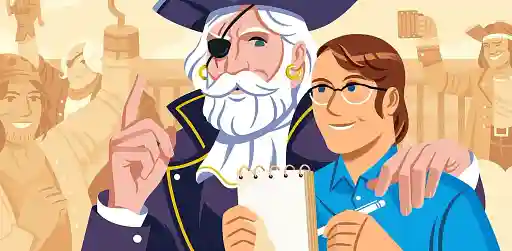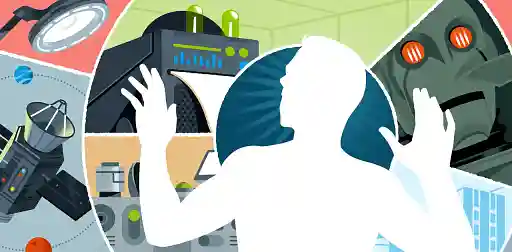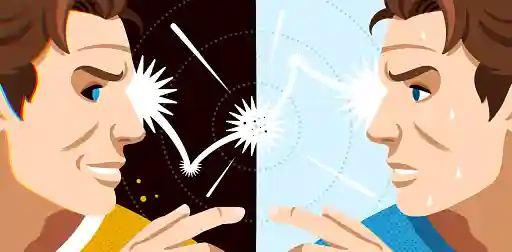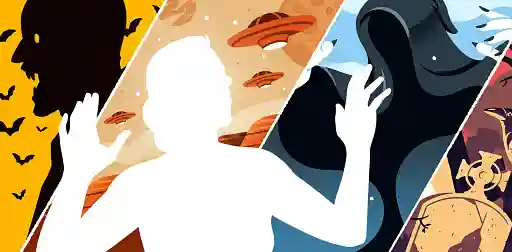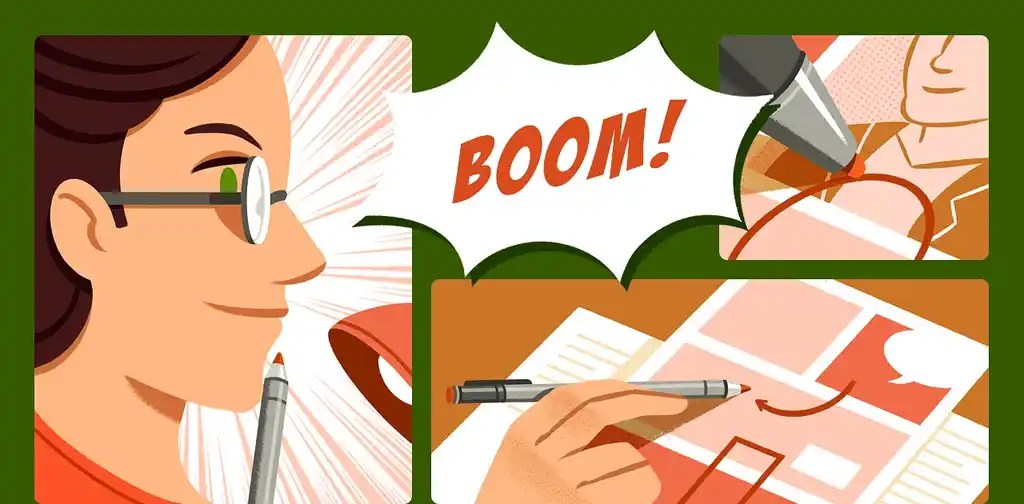Posted on Jan 12, 2021
How to Write a Graphic Novel in 8 Action-Packed Steps
About the author
Reedsy's editorial team is a diverse group of industry experts devoted to helping authors write and publish beautiful books.
More about the Reedsy Editorial Team →About Martin Cavannagh
Head of Content at Reedsy, Martin has spent over eight years helping writers turn their ambitions into reality. As a voice in the indie publishing space, he has written for a number of outlets and spoken at conferences, including the 2024 Writers Summit at the London Book Fair.
Learn more →Graphic novels have become an increasingly large part of mainstream culture in the past decade. Readers of all ages are paying attention to stories told through "sequential art" — better known as "comics" to you and me — and graphic novels have become the go-to medium for more and more blockbuster hits.
With all this interest, there’s never been a better time to learn how to write a graphic novel. But if all you’re familiar with is superhero comic books, you might find yourself at a loss. First things first: what is a “graphic novel,” anyway?
Graphic novels vs comic books: what’s the difference?
Comics have always thrived as serialized stories — either in newspaper strips or as comic books in newsstands and drugstores across the world. But while they’ve seen their share of popularity over the decades, many readers have passed them by, either out of an inability to dip into a long-running narrative without backstory or from the lingering stigma that comics are only for children.
However, the 70s and 80s saw the rise of the “graphic novel,” which brought comics onto the shelves of traditional bookstores. These substantial, book-length volumes varied between anthologies like Will Eisner’s A Contract with God, collections of serialized arcs like Frank Miller’s The Dark Knight Returns, or complete standalone works like Art Spiegelman’s Maus. With their self-contained narratives, graphic novels appealed to casual readers who preferred to read a whole story in one sitting.
As a result of this history, comic books tend to be:
- Serialized stories;
- Written in small issues, one “chapter” at a time;
- Printed on cheaper paper, and saddle-stitched together.
While graphic novels are usually:
- A longer, self-contained story;
- Printed in “trade paperback” format, just like any other book, and;
- Printed on high-quality, glossy paper.
To help you understand how to write for this fast-moving medium, we talked to three of Reedsy’s expert editors: Beth Scorzato, Cara Stevens, and Jim Spivey. These professionals have experience as both writers of graphic novels as well as editors of graphic novel scripts.
Or if you think short, serialized comic books would suit your story better, check out this post on how to make a comic book.
How to Write a Graphic Novel
We’ve distilled the advice of three of the editors on our marketplace down to eight general steps. If you’re a budding indie graphic novelist looking to write a graphic novel of your very own, look no further. Let’s break out the ink and get started!
Step 1. Decide what kind of story you’re telling
Because the world of graphic novels is as varied as any other novel, the first thing you’ll need to do is narrow down what kind of graphic novel you’re writing.
It’s very possible you already have a sense of the story — or at least the target age group and genre your book falls into. But before you commit to a full graphic novel, it’s worth doing some market research and really nailing down where your book will fit into the publishing landscape.
Just like regular novels, graphic novels come with genre expectations. From the blockbuster styling in Miles Morales: Ultimate Spider-Man to the epic scale of Saga to the home-spun personal touches in Lucy Knisley’s domestic memoirs, graphic novels will give your audience certain preconceptions. These should shape everything from the type of artist you hire to the way you structure your story, so be sure you understand what your audience expects before you begin. The good news: it means you get to read a lot of graphic novels as research!
Of course, you don’t want your graphic novel to become lost in a sea of identical stories either. As you’re hunting for inspiration and mulling over your place in this lush literary landscape, ask yourself: what unique spins can you bring to the table?
Maybe you envision your story being told entirely through pictures, or maybe you have a biting sense of humor not usually found in your genre. An interesting edge could easily make your book stand out, but make sure your ideas still appeal to your target audience — if your readers are looking for a middle-grade novel about schoolyard shenanigans and budding friendships, they may not be receptive to visually intense body horror.
Free course: Finding your target readers
Identify your target readers, find out where they 'live', and get them to buy your book. Get started now.
Of course, you don't just need an idea of genre and plot. You'll also want to establish who your story is about early on. Having a solid grasp of your characters, their personalities, and even their physical attributes is important before you even begin writing: after all, somebody's going to have to draw them! For a head start on all of this, try out our free character profile template.
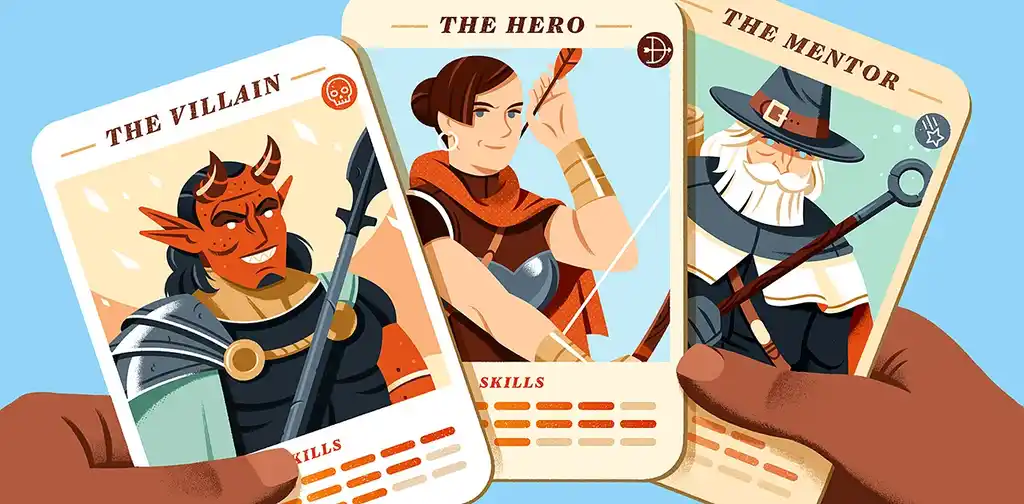
FREE RESOURCE
Reedsy’s Character Profile Template
A story is only as strong as its characters. Fill this out to develop yours.
Step 2. Settle on your visual style
Odds are good that all your favorite graphic novels have unique visual styles that drew you to them in the first place. But if you think the stunning visual language you love is something that just happens, think again! Curating not only an engaging visual style but one that fits your book and raises it to the next level, is a very deliberate process.
A few things you’ll want to keep in mind when deciding on your own visuals include:
⛰️ The overall tone and scope of your graphic novel. This will help you immensely as you search for the right illustrator to collaborate with, but it’s also good to know as you sit down to plot. After all, if you’re going for a gritty, urban feel with lots of monotones and washed-out colors, it’s not going to fit when you then write half the story to take place in toy stores or parks on a bright spring day.
🎭 The themes of your graphic novel. Are you telling a story about the resiliency of the human spirit, the power of love, or the unyielding churn of modernization? Think about the kind of imagery, colors, and design elements that will best support this.
🧑🏻🤝🧑🏽 Your target audience. Graphic novels written for children will likely have a very different style than, for example, those written for adults looking for violent action sequences. Genre, age range, and even their expected familiarity with comics and graphic novels can play a big role in how the story unfolds visually.

Despite being drawn by the same artist, you’d never find these two pages in the same comic. Each was specifically chosen to match the tone of the stories. (Image credit: Andy Baker.)
If you’re not illustrating the book yourself, you should keep an open mind on this point — but it does help to have some expectations and ideas going into your collaboration. Lay out the sort of designs that appeal to you and your target market so that both you and your eventual artist have a united vision for the graphic novel you’ll build together.
And speaking of which…
Step 3. Look for your artist early
There’s no getting around it: graphic novels are a visual medium. This also means that for many of us, it’s a collaborative craft like filmmaking, where the writer creates the screenplay while the illustrator is the director, editor, costumer, props master, stunt coordinator, and sound effects designer (BIFF! POW!).
In comics, writers get the lion's share of the glory, but insiders know it’s the illustrators who can make or break a title.
You might not be able to hire an artist this early, and that’s okay. But the sooner you can begin building a rapport with your artist, the sooner they’ll be able to bring their talents and experience to the process.
Cara Stevens describes her ideal working relationship as one of mutual trust. “When I’ve worked with an illustrator for a while, we develop a good enough connection that I can tell him or her: ‘make something funny happen in the background for the next four frames as they speak’. The illustrator appreciates the opportunity to get creative, and the work ends up better because it’s more collaborative.”
This is the kind of process that makes the work not only effective but enjoyable, so be sure to pick your artist with care. Once you’ve compiled a list of artists who fit the bill, reach out and talk to them. Ask for some sample pages, as well as the level of description and feedback they like to get from their writers.
Hire a professional illustrator
Amanda L.
Available to hire
Children’s book illustrator and book designer. I specialise in picture books and middle grade fiction and love to use texture and colour.
David S.
Available to hire
Award winning illustrator. Clients: Macmillan, HarperCollins, Scholastic, Bloomsbury, Audible, Walker Books, Highlights Magazine and Hasbro.
Nicola R.
Available to hire
I create vibrant, emotional scenes that spark curiosity, bringing MG & YA worlds to life with a passion for storytelling and design.
Finally, make sure you have a price in mind and can pay them fairly for their work! Be wary of an artist who’s willing to undersell themselves. It’s good to have a budget, but this is one area where you really do get what you pay for.
Step 4. Get your first draft down
There are a few ways you can approach the drafting process with graphic novels. Editor Beth Scorzato encourages writers to first focus on their strengths:
“Don't worry about your first draft being written in pieces. If you are intimidated by the format, but are strong on dialogue, go ahead and write your first draft as a pure dialogue pass, then step back and figure out how to break it up and add descriptions. Conversely, if you have a really strong sense of what you want your visuals to be, feel free to write it out as prose and then pare it back to panel descriptions and add dialogue later.”
At this stage, you don’t need to stress over formatting or exactly how you’re going to fit everything into a single panel. The first draft is where you’ll explore the story and characters, as well as feeling out your visual ideas.
If you’re stuck with your draft, consider laying out just the structure as best you can. Storyboarding can easily help you visualize how your scenes need to unfold. Don’t worry about the exact angles of your “shots” yet, just map out things like:
- How many characters are in a scene at once;
- The types of locations your scenes are set in;
- How much of your story is action, dialogue, introspection, etc.;
- How many scenes you need to convey the plot effectively.
Step 5. Hone your pacing
Once you’ve got the basic structure of your story down, Jim Spivey suggests writing out a series of “thumbnails” for each page:
“These thumbnails are similar to the outline of a novel, where the writer indicates how many panels they think will be on the page, what specific action happens in each panel, and a rough idea of the text (captions and balloons).”
This will show you how much space you’ll need to get your story across, which in turn helps you assess if your pacing is on point. If your scene takes too many panels, try rearranging things to convey the same meaning in less space. This is a valuable skill that will not only make your graphic novel stronger, but will help you pace regular novels as well. Because, as Beth Scorzato explains:
“At the end of the day, the format may be different, but the fundamentals of storytelling are the same. You could do everything ‘technically’ right when laying out your panels and formatting your graphic novel script, but if the pacing and storytelling aren’t strong, it won't matter.”
Step 6. Fine-tune your visuals
Now that you’ve got your story down, it’s time to really refine your vision.
Go over your manuscript again, this time with a fine eye toward your panel descriptions. Jim Spivey offers this tidbit:
“A writer should think of a graphic novel much in the same way you would script a silent movie, such that the story could still be understood even if all the word balloons and captions were to fall off. With that in mind, making sure each panel is a strong visual that moves the story along is job #1 in a graphic novel script; the words should come after.”
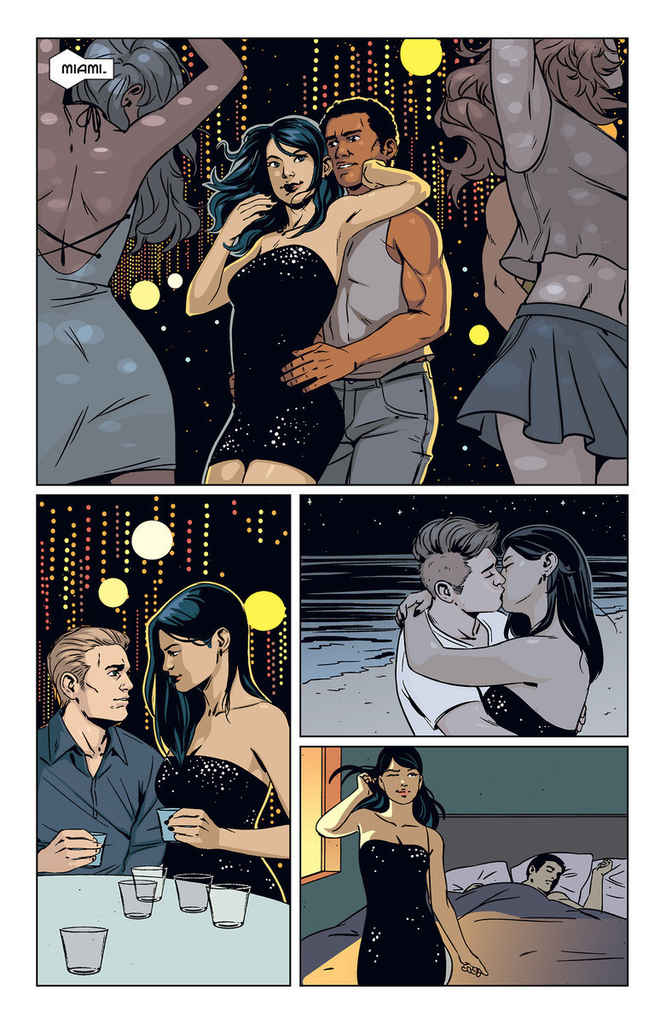
Artist Alise Gluškova captures a whole evening in just four pictures.
If you’re intimidated by this prospect, remember the old “show, don’t tell” rule and consider the following questions:
- How would you convey that a scene is sad, or joyous, or righteous?
- What sort of images, colors, and settings feel like those moods?
- What actions are your characters taking to reflect their thoughts and feelings?
Above all, don’t clutter your pages. Comics aren’t movies, and the space you have to work with is limited. As Beth Scorzato explains:
“In a single panel, Batman can walk into a room or turn on a lamp in the room. He cannot walk into a room and turn on a lamp in the room in the same panel. You have one action per panel, so pick the most important ones. If your storytelling is strong, people will know what happens in between.”
Of course, there’s nothing wrong with getting a little extra help along the way. The following volumes should give you a solid foundation for how storytelling works in comics:
- Understanding Comics by Scott McCloud
- Making Comics by Scott McCloud
- Comics & Sequential Art by Will Eisner
- Illustrated Guide to Writing Comics by Paul Kupperberg
Step 7. Tighten your dialogue
Before you turn your manuscript over to an illustrator, it’s important to make sure your script is as tight as possible. You don’t want to waste time ventriloquizing your entire story, only to have your illustrator come back to tell you that your pages are too cluttered. Learning how to think in pictures will help, but the other big thing you can do is go through and trim your dialogue to be as clean as possible.
The reason? Dialogue takes up a lot of space. As Jim Spivey put it:
“There’s only so much space in a single panel, and the majority of that space should be left to the visual. Ultimately, if the writer ends up stuffing a panel with captions and word balloons, then the visual isn’t doing its job.”
This isn’t to say that you shouldn’t use dialogue, of course. On the contrary, good dialogue is invaluable in graphic novels — but since you have limited space, graphic novels need their dialogue to be pithy, precise, and powerful.
As you’re drafting your script, ask yourself:
- Is there a more concise way for a character to say that?
- Does your character need to speak, or can their expression carry the reaction better?
- Does each line move the story or character arcs forward?
If you’re still having trouble paring down your speeches, be ruthless! Write a version that uses the fewest words possible and see how it sounds. You can always pad it back out later. And these habits don’t just help your graphic novel scripts. Cara Stevens found that:
“My first graphic novel had long speech bubbles that took up most of a frame. As time went on, my editor helped me pare down the epic speeches to a bare minimum. It not only helped move the action along better in the graphic novels, it also made me a better, more concise prose writer in the long run.”
If you ask us, we’d say that’s a win! For more tips on writing dialogue that pops, you can check out for our free course below.
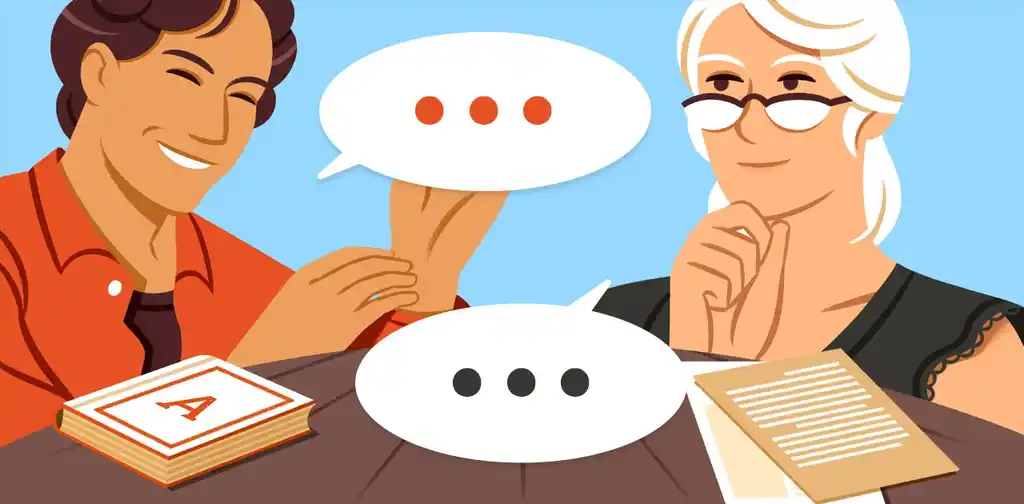
FREE COURSE
How to Write Believable Dialogue
Master the art of dialogue in 10 five-minute lessons.
Step 8. Format your manuscript for an illustrator
While there is no formal standard for comic scripts (hello, chaos!), there are a few templates that have gained popularity in recent years. Final Draft includes a comics template, and there are many available for download as well. Following one of these will make your life (and the life of your artist) a lot easier.
But even if you’re not using a standard template, it helps to understand the terminology of graphic novels. You don’t want to confuse your artist by describing a spread as a page, for instance — that would lead to disaster!
The most basic phrases you should know include:
⬜ Panel: This is the foundation of a comics page. Panels are the boxes that divide up the moments of your narrative. Place them together in a specific sequence and they convey movement, the passage of time, and all the other building blocks of a story.
📄 Page: A full page of panels, which can be on either the left or right side of your book.
📖 Spread: Both a left and a right page, viewed together.
➕ Border: The line that boxes in your panels. Note: sometimes, panels are displayed without a border as well, to relay specific feelings, themes, or motions.
📏 Gutter: The white space between panels.
The better you understand your format, the better you’ll be able to communicate what you’re looking for to your artist, and the easier the collaborative process will be.
As you can see, writing a graphic novel is a very different process than writing a novel — but so long as you cover the fundamentals of good storytelling (with compelling characters, tight dialogue, and appropriate plot twists) and you’ve got an artist who can convey those ideas in interesting and nuanced ways, there’s no reason why you, too, can’t publish a graphic novel of your very own. We look forward to reading it!
